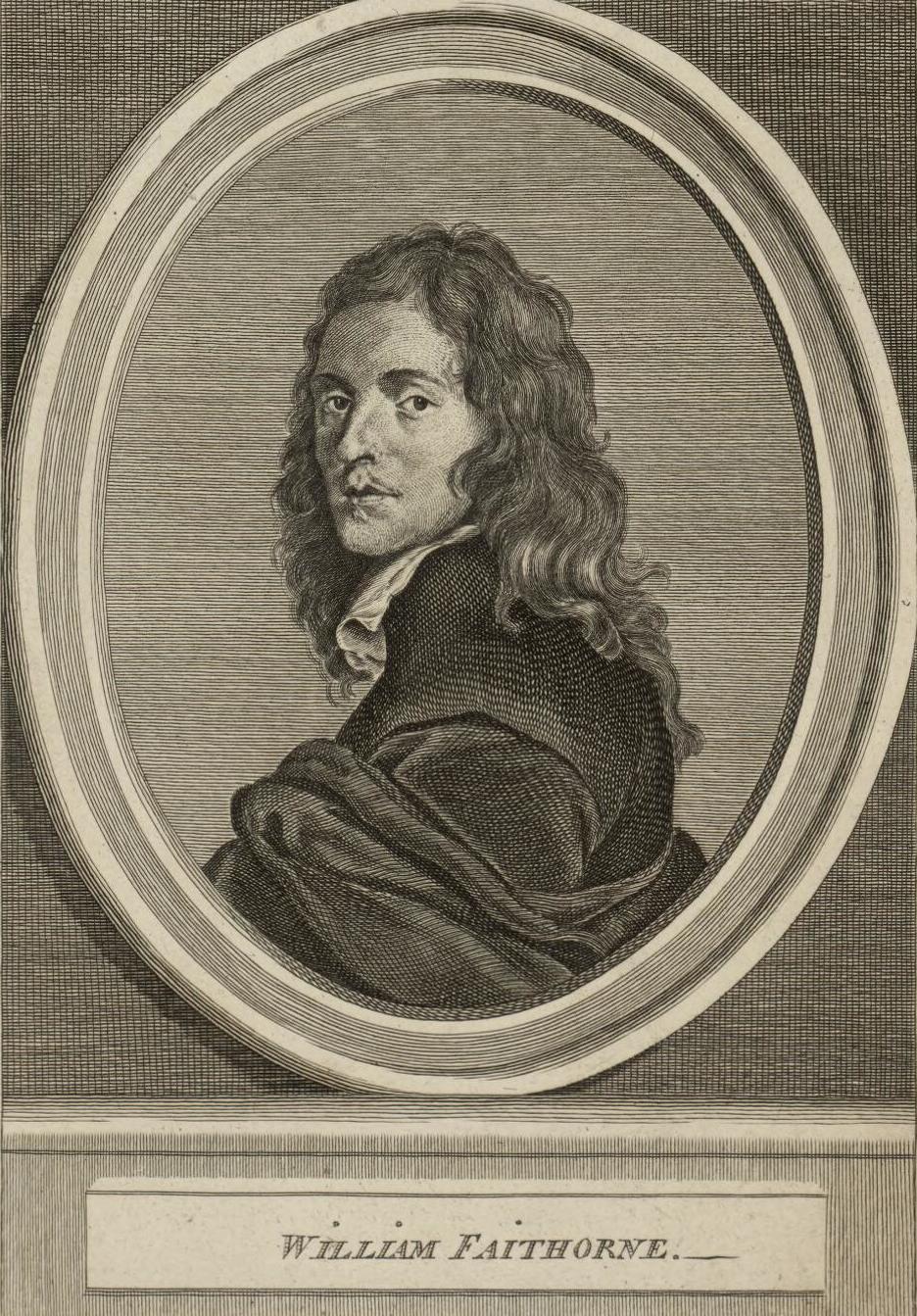William Faithorne on:
[Wikipedia]
[Google]
[Amazon]

 William Faithorne, often "the Elder" (161613 May 1691), was an
William Faithorne, often "the Elder" (161613 May 1691), was an

 William Faithorne, often "the Elder" (161613 May 1691), was an
William Faithorne, often "the Elder" (161613 May 1691), was an English
English usually refers to:
* English language
* English people
English may also refer to:
Peoples, culture, and language
* ''English'', an adjective for something of, from, or related to England
** English national ide ...
painter and engraver.
Life
Faithorne was born inLondon
London is the capital and List of urban areas in the United Kingdom, largest city of England and the United Kingdom, with a population of just under 9 million. It stands on the River Thames in south-east England at the head of a estuary dow ...
and was apprenticed to William Peake. On the outbreak of the Civil War
A civil war or intrastate war is a war between organized groups within the same state (or country).
The aim of one side may be to take control of the country or a region, to achieve independence for a region, or to change government policies ...
Faithorne accompanied his master into the king's service, and being made prisoner at Basing House
Basing House was a Tudor palace and castle in the village of Old Basing in the English county of Hampshire. It once rivalled Hampton Court Palace in its size and opulence. Today only parts of the basement or lower ground floor, plus the fo ...
, he was confined for some time to Aldersgate, where, however, he was permitted to follow his profession of engraver, and among other portraits did a small one of George Villiers, 1st Duke of Buckingham.
At the earnest solicitation of his friends Faithorne very soon regained his liberty, but only on condition of retiring to France, where he received instruction from Robert Nanteuil
Robert Nanteuil (; 1623 – 9 December 1678) was a French portrait artist: engraver, draughtsman and pastellist to the court of Louis XIV.
Life
He was born in Reims in 1623,Temple Bar, where, besides his work as an engraver, he carried on a large business as a print-seller.
In 1680 Faithorne gave up his shop and retired to a house in Blackfriars, occupying himself chiefly in painting portraits from the life in crayons, although still occasionally
engaged in engraving. It is said that his life was shortened by the misfortunes, dissipation, and early death of his son William. He was buried in the church of St Ann Blackfriars on 13 May 1691.
Work
Faithorne is especially noted as a portrait engraver, his subjects including Sir Henry Spelman,Oliver Cromwell
Oliver Cromwell (25 April 15993 September 1658) was an English politician and military officer who is widely regarded as one of the most important statesmen in English history. He came to prominence during the 1639 to 1651 Wars of the Three K ...
, Henry Somerset, Marquis of Worcester, John Milton, Queen Catherine, Prince Rupert of the Rhine, Cardinal Richelieu, Sir Thomas Fairfax
Thomas Fairfax, 3rd Lord Fairfax of Cameron (17 January 161212 November 1671), also known as Sir Thomas Fairfax, was an English politician, general and Parliamentary commander-in-chief during the English Civil War. An adept and talented command ...
, Thomas Hobbes
Thomas Hobbes ( ; 5/15 April 1588 – 4/14 December 1679) was an English philosopher, considered to be one of the founders of modern political philosophy. Hobbes is best known for his 1651 book ''Leviathan'', in which he expounds an influ ...
, Richard Hooker
Richard Hooker (25 March 1554 – 2 November 1600) was an English priest in the Church of England and an influential theologian.The Oxford Dictionary of the Christian Church by F. L. Cross (Editor), E. A. Livingstone (Editor) Oxford University ...
, Robert Devereux, 2nd Earl of Essex
Robert Devereux, 2nd Earl of Essex, KG, PC (; 10 November 1565 – 25 February 1601) was an English nobleman and a favourite of Queen Elizabeth I. Politically ambitious, and a committed general, he was placed under house arrest following ...
, and Charles I Charles I may refer to:
Kings and emperors
* Charlemagne (742–814), numbered Charles I in the lists of Holy Roman Emperors and French kings
* Charles I of Anjou (1226–1285), also king of Albania, Jerusalem, Naples and Sicily
* Charles I of ...
. According to the ''Encyclopædia Britannica'' Eleventh Edition, his engravings were "remarkable for their combination of freedom and strength with softness and delicacy", adding that "his crayon paintings unite to these the additional quality of clear and brilliant colouring".
In 1658 Faithorne engraved a large map of London which had been drawn by the Somerset
( en, All The People of Somerset)
, locator_map =
, coordinates =
, region = South West England
, established_date = Ancient
, established_by =
, preceded_by =
, origin =
, lord_lieutenant_office =Lord Lieutenant of Somerset
, lord_ ...
landowner Richard Newcourt. Printed on four sheets, it provides important evidence for the geography of the city before the Great Fire. In 1662 he issued a translation of Abraham Bosse
Abraham Bosse ( – 14 February 1676) was a French artist, mainly as a printmaker in etching, but also in watercolour.William Faithorne the younger (1656–86), was a promising
mezzotint
Mezzotint is a monochrome printmaking process of the '' intaglio'' family. It was the first printing process that yielded half-tones without using line- or dot-based techniques like hatching, cross-hatching or stipple. Mezzotint achieves tonal ...
engraver, but became idle and dissipated, and involved his father in financial difficulties.
Notes
References
* *External links
* {{DEFAULTSORT:Faithorne, William 1691 deaths 17th-century English painters English male painters English engravers English portrait painters 1616 births